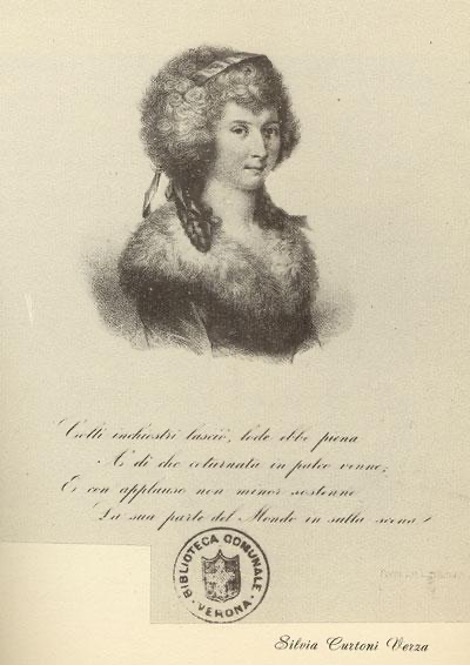Silvia Curtoni Verza
The cultural ambassador of the eighteenth century

Antonio Mancini (1893) Portrait of Eugenia Vitali Lebrecht, oil on canvas - Achille Forti Modern Art Gallery, Verona
Born in Verona in 1751, Silvia Curtoni married Count Giuseppe Verza Guastaverza. The countess did not limit herself to the traditional wealthy life of the noblewoman, but cultivated a passion for theater, writing and travel. She acted, wrote poetry and prose texts.
In Milan in 1788 she met the poet Giuseppe Parini, who dedicated sonnets to her and with whom she would have a constant exchange of letters and friendship.
With the outbreak of the French Revolution and the period of the Terror, Parini reproached her for dressing "guillotine-style". In fact, Silvia was inspired by Parisian women tying a red ribbon around their bare necks, as if they were ready to be beheaded. Parini criticized this coquetry that simulated the gallows, but the episode makes it clear how open Silvia was to the international trends she brought to her Veronese salon. The Palazzo degli Honorij in central Piazza Bra became, thanks to Countess Curtoni, an exclusive meeting place for the leading literati, scientists and thinkers of the period. Because of the evocative decor made of stucco, mirrors and paintings, and the pleasant atmosphere there, the salon was described as a "magical grotto." Continuing to frequent the main salons of other Italian cities herself, where she was received with full honors, she became an ambassador of Veronese culture between the 18th and 19th centuries.
Silvia was admired for her gifts of wit, grace and culture, but she also knew how to assertively assert herself in a manner described as "masculine" by her contemporaries, despite the fact that she emanated an unmistakable feminine charm.
In 1819 she became the first woman to join the Literary Society as an honorary member.
